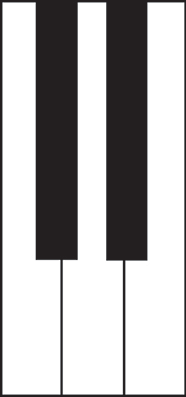Repeated Notes
Always play a repeated note on a different spot on the key.
This means that the repeated note has to played in-and-out in the depth dimension, and combine this with staccato touch
- The finger has to go into the key, then out.
- Slight pulling back, then off.
- More off then back.
- You have to get to the bottom of the key and you have to get off the key.
- You have to find the right proportion between getting off the key and getting to the bottom.
- Flick the dust off the key with each finger individually and then combine the motion.
- Finger Pattern : [4,3,2,1] All fingers are rotating toward the thumb except the fourth finger, which is rotating outwards (supination) in the opposite direction.
- Keep your fingers right on the key and have exact timing in the attack and release.
- Be on balance.
- When the sound is made with the finger, the finger is on its way up.

Shaping used with a Repeated Note
This example involves the discussion of shaping with a repeated note and playing using a different area of the finger each time the note is played.
- Let it be a different spot on the finger and not on the key
- Remain stationary on the key, alter the position of the thumb.
- Underneath the movement, there has to be rotation towards the thumb.
- Do not play the repeated note until the key is felt in its unplayed position.
Octave Playing
Octave playing usually fails simply owing to rotational stiffness.
In all octave and double-notes passages the required slight (but invisible) rotatory exertions towards the thumb must be repeated freely each time and individually, for each octave.
This also holds likewise for any other passage which involves double-notes, such as sixths and thirds.
This also holds likewise for any other passage which involves double-notes, such as sixths and thirds.